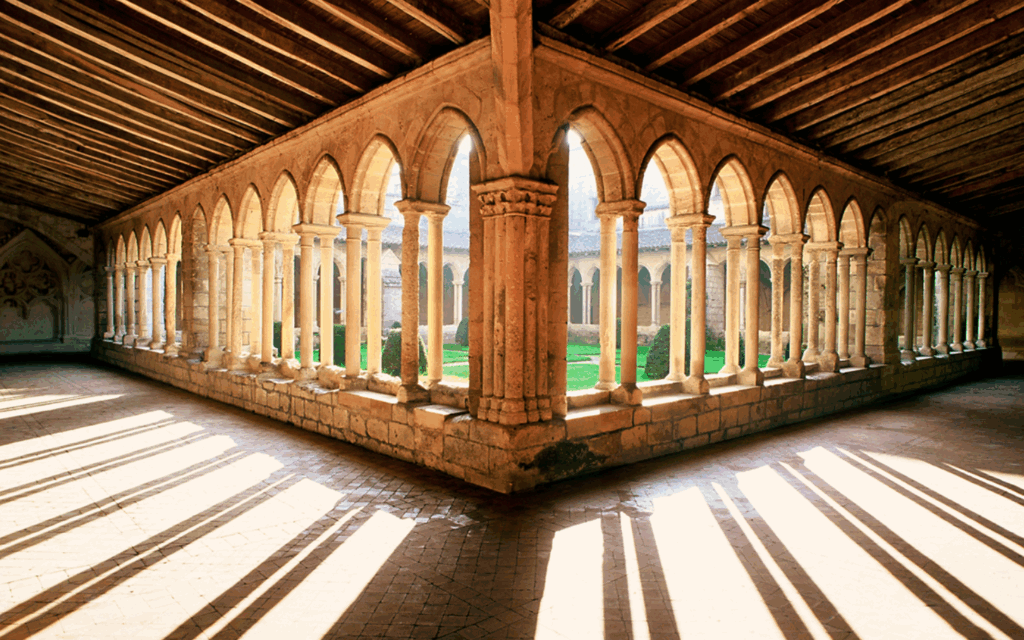
The story of Miracles, History, and Devotion of Émilion before he was a Saint…
“In northwest France, young Émilion served as a baker for the Count of Vannes in Brittany. But he was not an ordinary servant; he was known for his compassion. At a time when famine often struck, and the divide between the rich and poor was significant, Émilion’s secret acts of sharing bread with the impoverished were acts of defiance against his master’s miserly nature, who forbade him from sharing the estate’s food with the peasants.
One pivotal day, the Count became suspicious, stopped Émilion from speaking with people in need, and questioned him about the contents hidden under his coat. Without the Count knowing, Émilion had been smuggling bread to the poor. Miraculously, when he opened his coat, pieces of wood were revealed instead of bread—saving him from the Count’s wrath and adding a divine aura to his sterling reputation. Émilion had performed his first miracle.
Unfortunately, miracles attract attention, sometimes unwanted. The news spread quickly, even without social media or newspapers. Finding his newfound status as a local saint uncomfortable, Émilion left Vannes. He journeyed southwards, stopping in the towns of Saujon and Saintonge, where he took up baking yet again.
As he settled into Saujon and Saintonge, his reputation followed him like a shadow. Jealous monks tried to sabotage his baking by hiding his essential tools. But Émilion wasn’t deterred. One day, he noticed his bread was burning but couldn’t find his oven mitts, so he miraculously removed scalding hot loaves from the oven with his bare hands, emerging unscathed. It was a feat that further solidified his divine reputation and sent him packing once again.
During the 8th century, France was not yet a unified nation as we know it today. It was a time of territorial divisions, marked by the Carolingian dynasty’s rise to power. Clovis, a name synonymous with the early French state, had already laid the foundation for the Medieval Kingdom of the Franks. The era was a blend of lingering Roman influences and burgeoning medieval Christian culture. It was at this crossroad of history and tradition that Émilion found his purpose.
Émilion eventually settled in the quaint town of Asxumbas, close to Burdigala (now the center of the village of Saint-Émilion, close to Bordeaux). Here, he chose a large limestone cave as his hermitage. This sacred sanctuary is located just beneath the town’s Market Square, adjacent to the Trinity Chapel, and not far from the catacombs and the monolithic church (this exact location). The hermitage, which legend says was hand-carved by Émilion himself, remains a reverent site for tourists today.
Émilion passed away on January 16, 787, but his impact was everlasting. Monks continued his mission for centuries, culminating in the construction of the Monolithic Church. Carved entirely from the same limestone that once formed Émilion’s hermitage, the church stands as a testament to enduring devotion and spirituality.
Today, the water flowing from Saint Émilion’s sanctuary cave isn’t just to quench your thirst. Its alleged healing properties have been credited with restoring sight to a blind person. In fact, the spring is believed to treat eye conditions, especially conjunctivitis.
According to the local guide, pilgrims on their way to Santiago de Compostela often make a detour just to visit this site. The hermitage has long been a magnet for lovers as well. Legend has it that a couple throwing two intersecting pins into the basin will marry within the year and enjoy lasting happiness. Today, a carpet of coins blankets the holy water basin, reminiscent of Rome’s Trevi Fountain, believed to grant the wishes of hopeful lovers.
As for the hermit’s seat, it is adorned with a statue of Our Lady of Guadalupe, symbolizing fertility. This has led to a tradition among women longing for children to sit upon it. Even Eleanor of Aquitaine is rumored to have sat there before giving birth to Richard the Lionheart and John Lackland. Regardless of the legend’s veracity, countless testimonials of miraculous pregnancies continue to reach the local tourism office.


